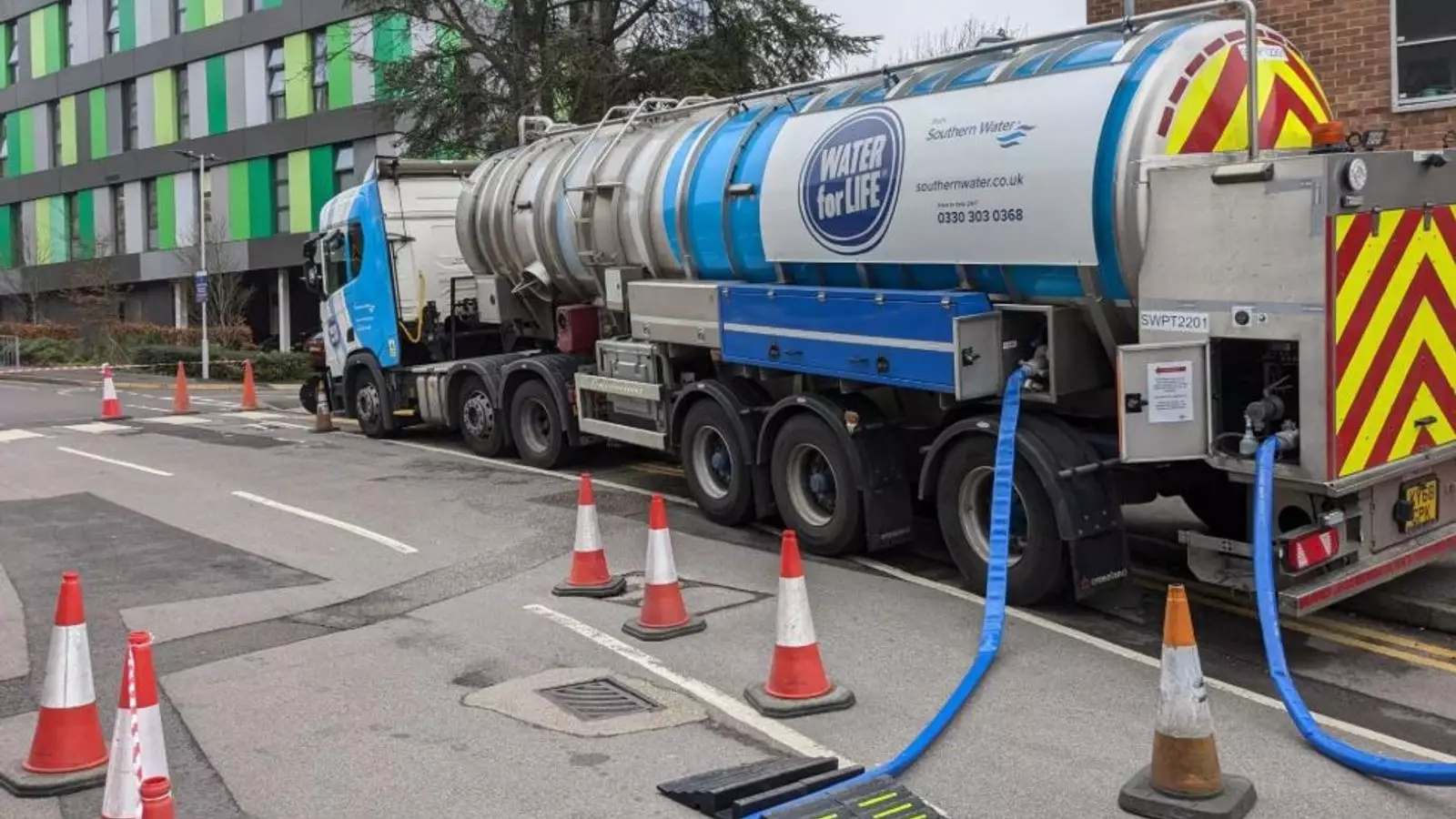In a troubling development, nearly 60,000 residences across Hampshire have been plunged into a water crisis due to a significant technical setback at Southern Water’s Testwood facility. This disruption has disproportionately impacted cities such as Southampton, Romsey, and Eastleigh, including areas within the New Forest. The failure to effectively manage water outflow has resulted in severe inconveniences for families and businesses alike, with bottled water stations becoming crucial lifelines. Although Southern Water has issued an apology and pledged to ameliorate the situation, they also warned that full restoration might stretch into the weekend.
Community Impact and Response Efforts
The ramifications of the ongoing supply issues are palpable, as long lines form at designated bottled water distribution sites located within local supermarkets and community centers. Notably, the Places Leisure Centre in Eastleigh, alongside Sainsbury’s and Asda superstores, has become a hub for residents desperately seeking freshwater. Southern Water has made arrangements to ensure that critical facilities like Southampton General and Princess Anne Hospitals are provided with the necessary resources during this crisis. While estimates suggest that around 58,000 homes are affected, the outreach efforts by the water company aim to mitigate the public’s distress, particularly among vulnerable communities.
This unfortunate supply failure coincides with alarming news regarding projected water bill increases across England and Wales. Southern Water is currently pushing for regulatory approval from Ofwat to implement an astonishing 84% increase in its charges. Meanwhile, Thames Water is seeking a 53% surge. The context of these proposed hikes is troubling, especially as residents are left grappling with the immediate inconvenience of water shortages. Ofwat, in its draft adjustments disclosed earlier in July, anticipates an average increase exceeding 20% in charges by 2030. This translates to an estimated annual rise of £20 per household, culminating in an average bill escalation from £448 to £542.
Investment Needs vs. Consumer Trust
The discussion surrounding rising charges is compounded by a narrative of necessary investments in water infrastructure, which has been projected to require a staggering £88 billion over the next five years. While these enhancements are aimed at improving services and addressing environmental challenges, the timing of such announcements against the backdrop of current supply failures fuels public skepticism about Southern Water’s capabilities and priorities. Many consumers are likely to question whether escalating costs will translate to improved reliability or merely contribute to operational inefficiencies that have already jeopardized their access to basic essentials.
As Hampshire reels from the water supply outage while bracing for steep increases in bills, residents are left navigating a complex web of immediate needs and long-term uncertainties. The responses from Southern Water will undoubtedly shape the future relationship between the company and the community it serves. In this period of crisis and financial concern, transparency and accountability in both operations and billing practices will be more critical than ever to restore trust and ensure sustainable water provision for all.


Leave a Reply